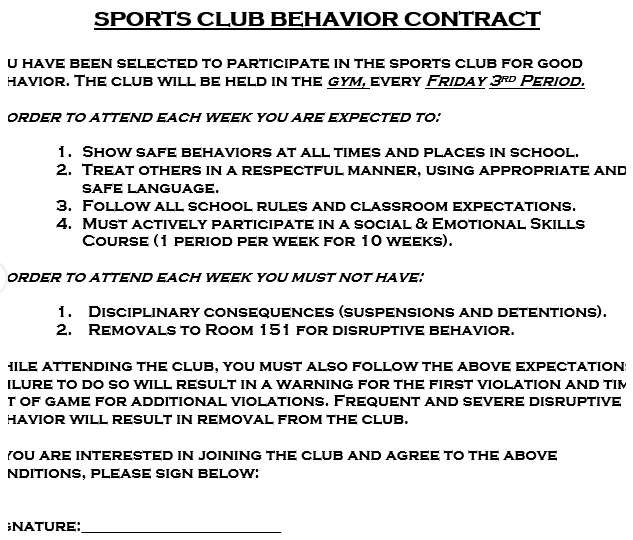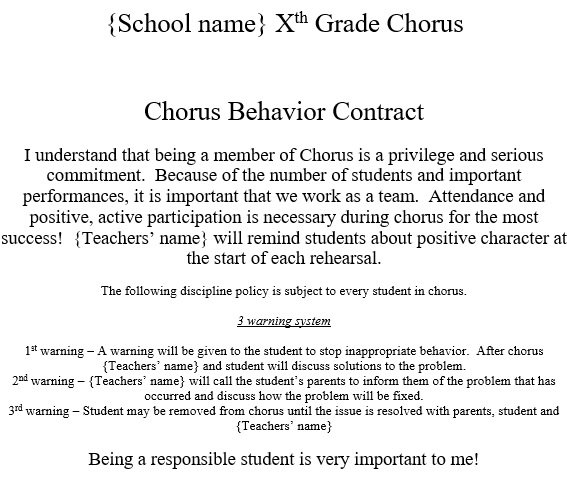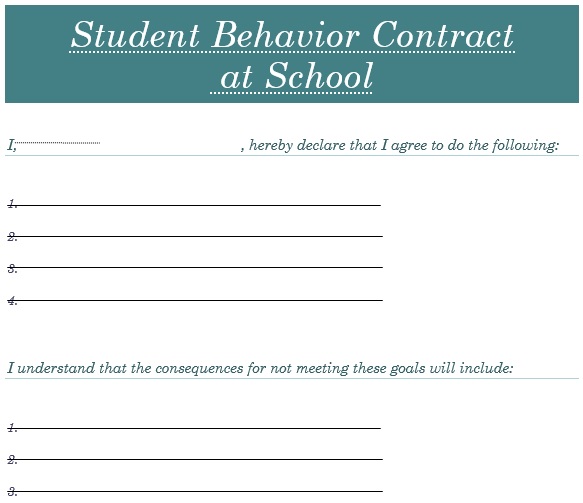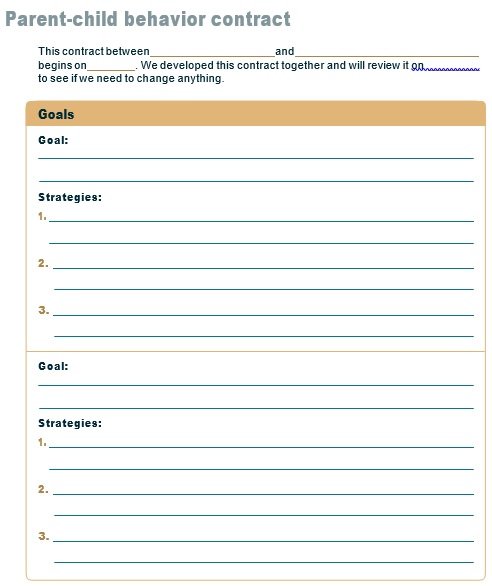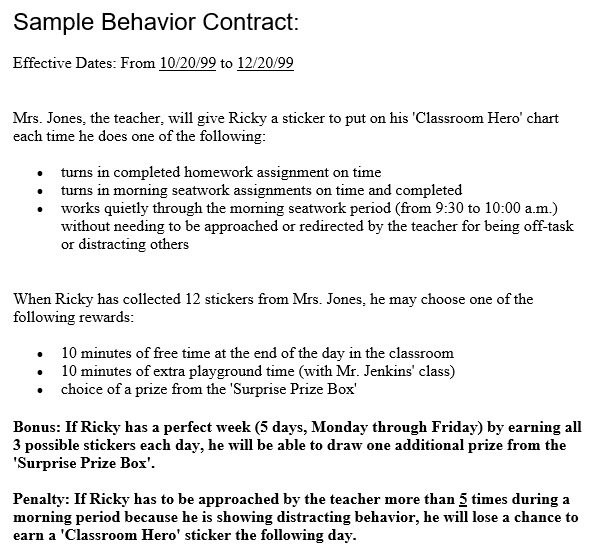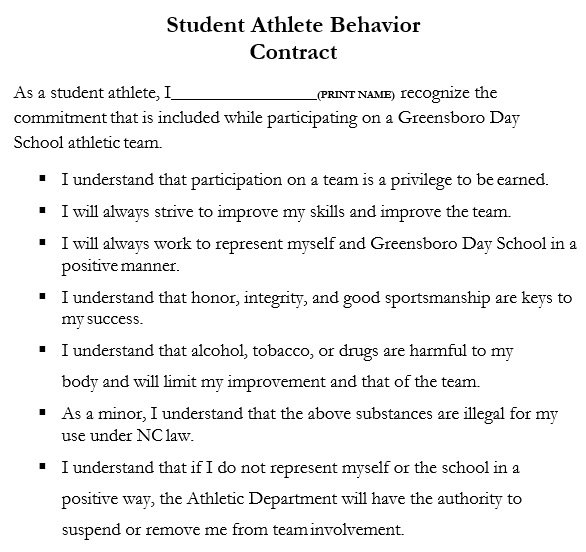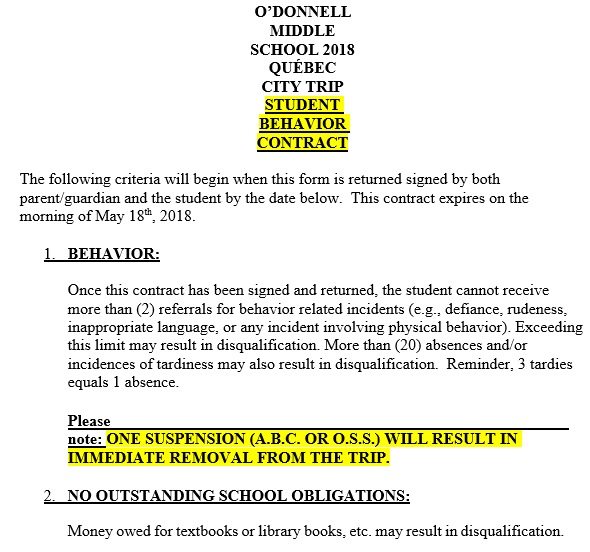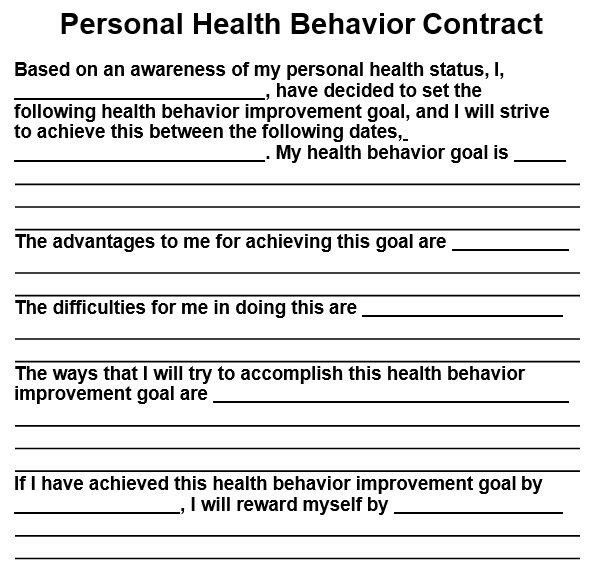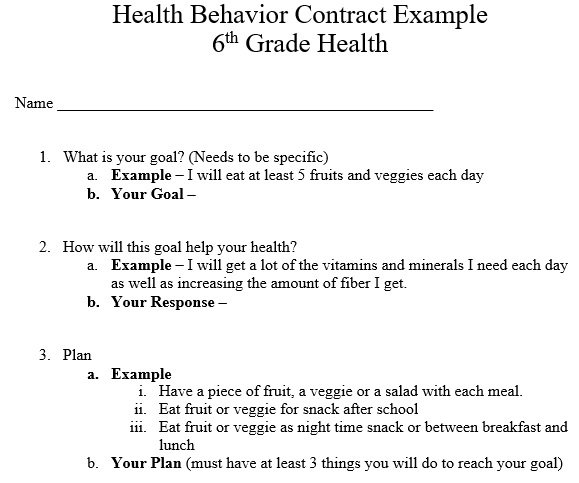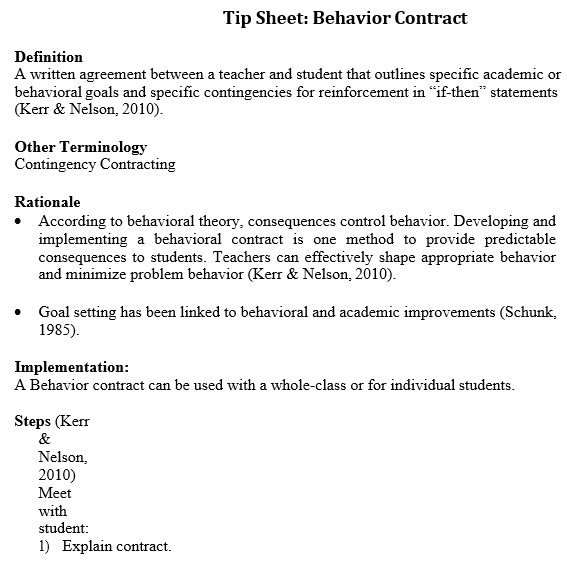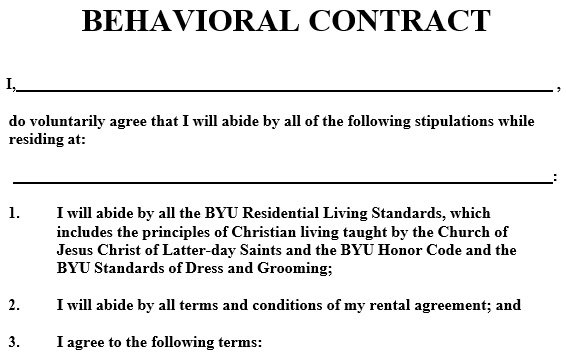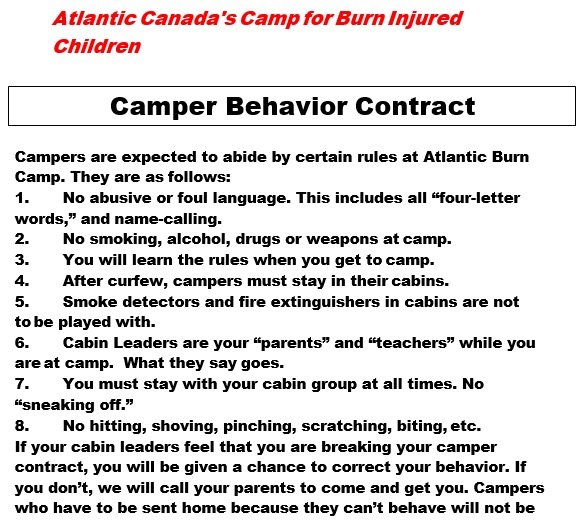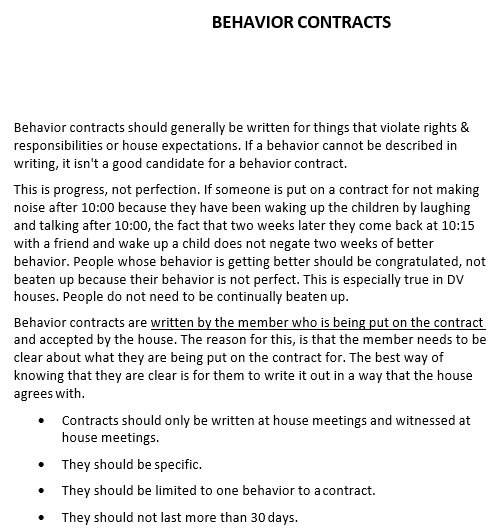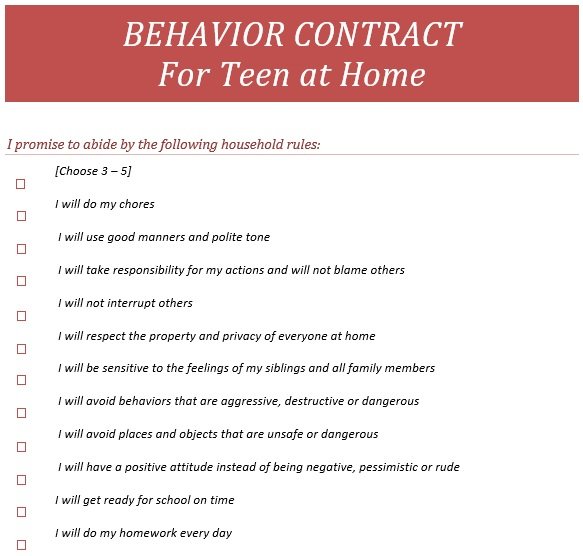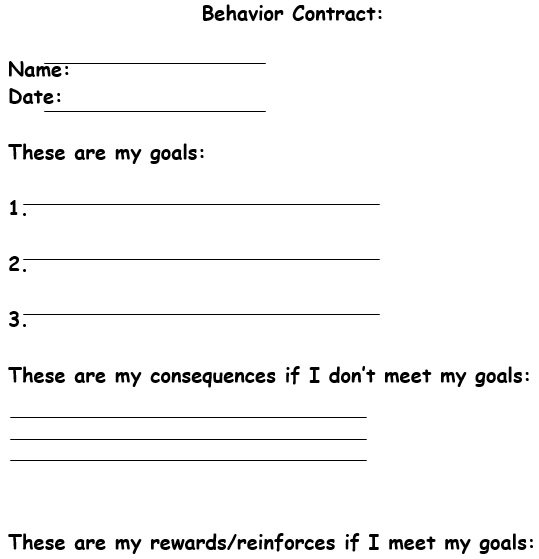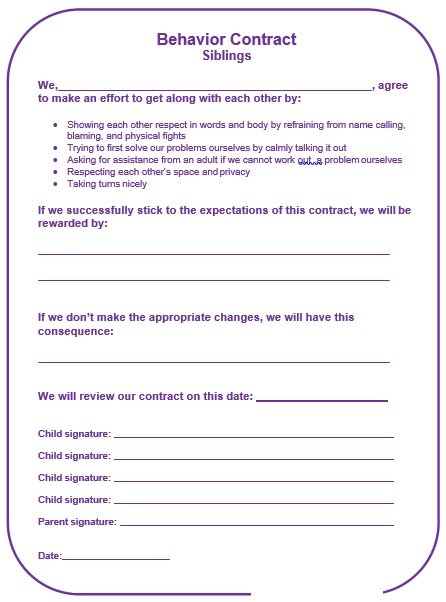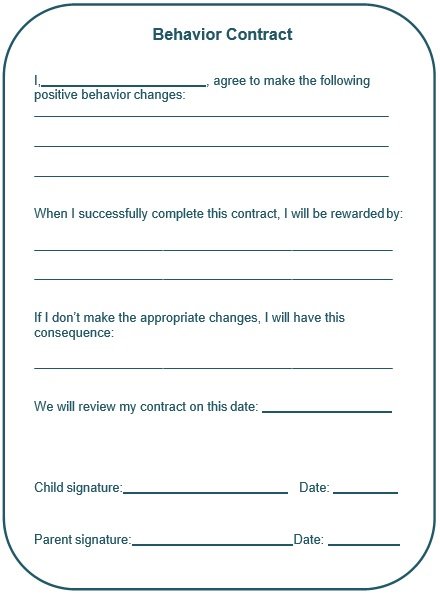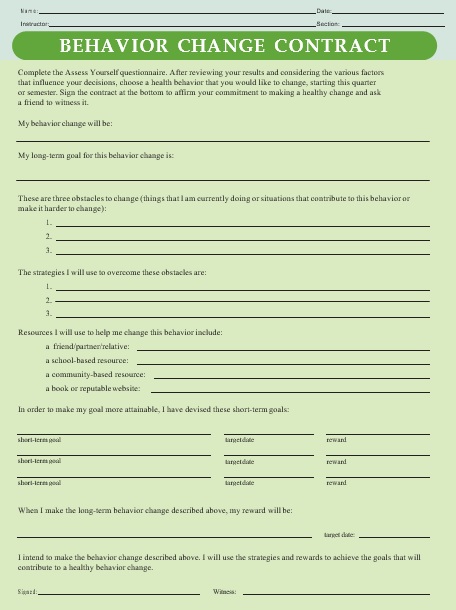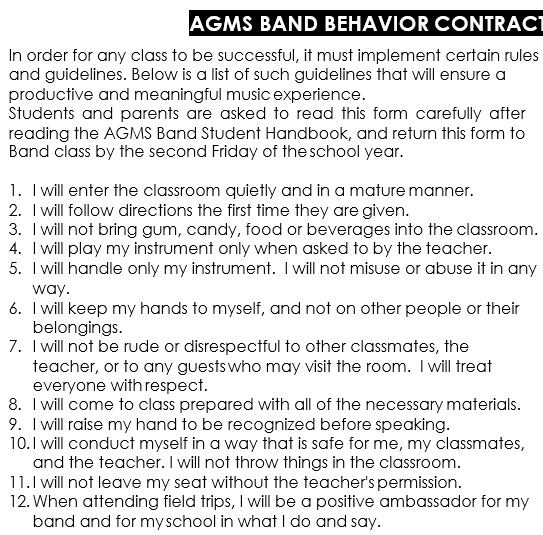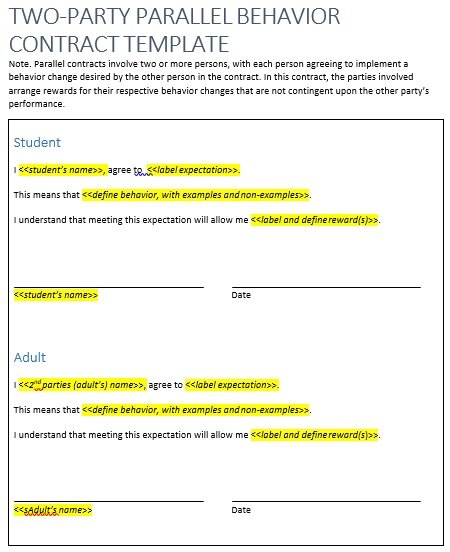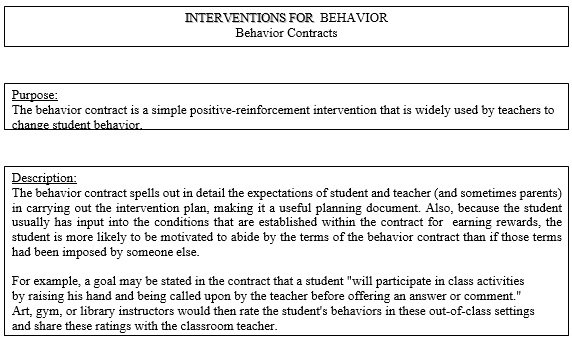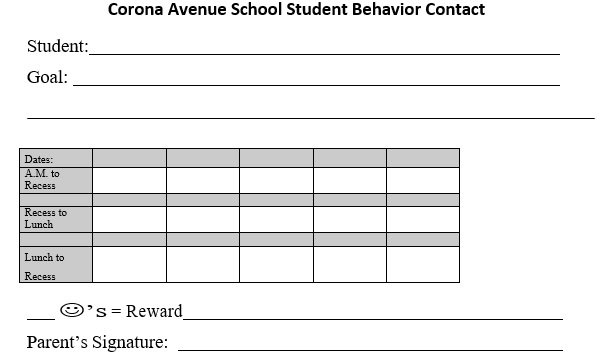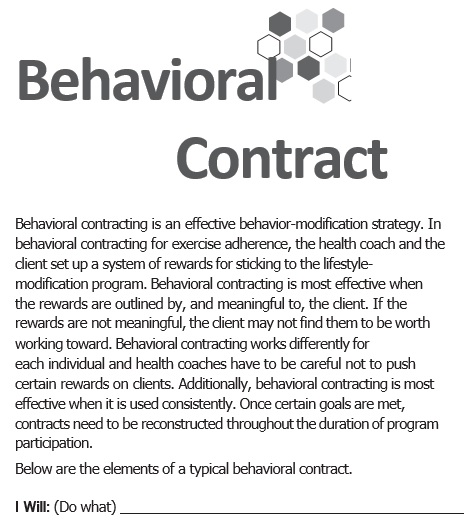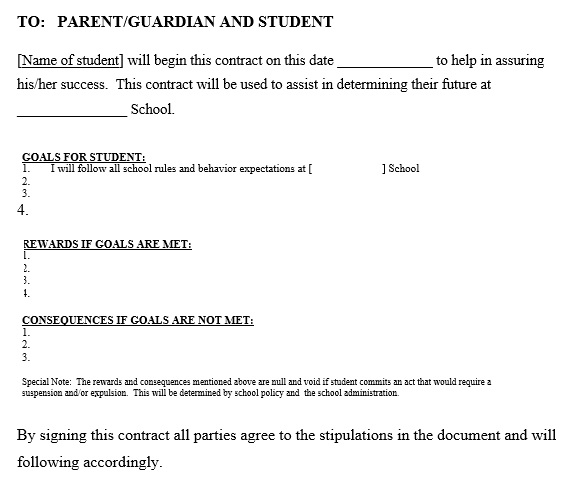A behavior contract template is a document that outlines the responsibilities of the individual and the organization for a specific behavior to change. Having such a template can be beneficial for students at all grade levels. This document makes your work easy and organized.
Table of Contents
- 1 What is a behavior change contract?
- 2 A middle school behavior contract:
- 3 A high school behavior contract:
- 4 An adult behavior contract:
- 5 Common elements to include in a behavior contract:
- 6 How to write a behavioral contract?
- 6.1 Prepare in advance
- 6.2 Negotiate with the student
- 6.3 Give it a heading
- 6.4 Explain the purpose
- 6.5 Outline specific behaviors
- 6.6 Give measurable and attainable goals
- 6.7 Decide when and how to provide rewards
- 6.8 Decide on the amount of reinforcement
- 6.9 Bonuses and penalties
- 6.10 Areas for signatures
- 6.11 Monitor and review
- 6.12 Be patient
- 7 The benefits of a behavior contract for a student:
- 8 Conclusion:
- 9 Faqs (Frequently Asked Questions)
What is a behavior change contract?
In second grade and above, all the way through high school, a behavior contract tends to work best for children. This contract is effective for students in order to improve self-monitoring skills. Students are more like to abide by the terms when they play a significant role in its creation. To make the contract effective, rewards have to motivate students sufficiently.
Moreover, it’s a fact that when this contract is introduced first then honest disagreements may arise regarding the interpretation of the terms. When this occurs, the teachers should clarify the language and meaning of the contract with students. The main purpose of this contract is to provide students the tools they require to improve their own behaviors.
Students below second grade may have difficulty to understand how the contract works and what is expected of them. Therefore, you should make a behavior contract more visual for younger students. Use elements such as stars, graphs or charts. This contract;
- Sets behavior limits
- Lists offenses to promote discussion
- Pays attention on positive behaviors
- Develops positive relationships among involved parties
- Rewards and motivates
A middle school behavior contract:
This behavior contract outlines what is expected in order to positively reinforce good behavior in middle school. This contract is among a teacher, student, parent and anyone else. At this age, behaviors like lying, skipping class, or being generally disruptive are fairly common when the students are starting to assert their independence. Within the contract, conditions are developed for earning rewards that encourages students to abide by the terms.
A high school behavior contract:
Students have to face the problems of peer pressure and trying to fit in high school. These issues may lead to negative and disruptive behavior. A high school behavior contract will outline the objectives and agreements of all involved parties. Students who have signed this contract indicate that they are motivated to improve their behavior. This document will include rewards for successfully achieving target behaviors.
An adult behavior contract:
An adult behavior contract can be created by employers. This contract addresses negative behaviors of an employee, such as angry outbursts. It is also made to reinforce positive behaviors a company would like to see in employees. In order to get a positive outcome all round, this is more of an agreement between management and employees.
Common elements to include in a behavior contract:
Here are the common elements to include in a behavior contract;
Behavior or task
Desired behavior or task is the first component to include in the contract. In this element, you have to address Ws questions
- What behaviors you want to improve?
- Who have to complete the task or improve the behavior?
- When should the behavior happen?
- How it would be improve or change?
The consequence or reward
Identifying what the consequence of success or failure will be is the next most important component. In this part of the process, you should involve your teen. This component is the effective motivator to change the given behavior.
You should give a piece of paper to your teen and ask them to write on it the rewards they would like to get in case they will accomplish the task or improve the given behavior. Keep in mind that the reward should be proportionate to the behavior that you and the parent can give to your teen.
Measuring the task/behavior
The measurement of the behavior that when it has been achieved is the final component. Understanding how often the behavior is currently occurring would be interested in some cases.
How to write a behavioral contract?
Here are the steps to write an effective behavioral contract;
Prepare in advance
At first, think about which one or two behaviors require to change and what to see in their place. It includes the following;
- Who monitors the behavior
- Who will give the reward
- When it will be received
Negotiate with the student
Negotiate with the students to make decisions on the behaviors, the expectations and the rewards. The rewards have to be meaningful to the student. Your rewards are easy to deliver, inexpensive and yet desirable. Since the students can easily get bored with the same old rewards week after week, you should use a variety of different rewards.
Give it a heading
Your behavior contract must contain a heading so that everyone can easily understand what it is.
Explain the purpose
Explain the purpose of the contract in a simple, clear, and understandable way. For instance, this contract will make sure that Pamela hands in homework every day.
Outline specific behaviors
The contract has to outline certain behaviors a student struggles with or is working on. Then, provide goals for changing these behaviors. For example, if a student calls out in class then the objective is to raise a hand instead of just calling out. To prevent disagreements, behavioral definitions will require a description in sufficient detail. By providing the following information there would be no question left about what will happen;
- The negative behavior,
- The replacement actions,
- The outcomes of engaging in the replacement behavior
Give measurable and attainable goals
Your target behaviors should be easy to observe and measure. Completion of class assignments is an easy goal to assess. Goals should be attainable not challenging.
Decide when and how to provide rewards
A statement should explain the minimum conditions. This allows the students to earn a sticker, point, or some other token for showing appropriate behavior. It should also contain a timeline. You should break down goals into small manageable steps so that they become easier to attain.
Decide on the amount of reinforcement
Before earning a preferred item or activity, you have to decide how many stickers or tokens a student will need.
Bonuses and penalties
Bonuses and penalties shouldn’t be included. But, by including, you can give students an extra incentive to follow the contract. For consistently reaching behavioral targets, a bonus may consist of offering an additional “pay-off.” However, penalties have to be given for more serious behavioral problems.
Areas for signatures
Most contracts require the signatures of both teachers and students. This indicates that they agree to adhere to the contract. The teacher should leave space for other signatures such as the student’s parents or a school administrator.
Monitor and review
Monitor and review the progress of students as required. Take a start with what is working. Inform the student that it is possible to renegotiate it if it isn’t working.
Be patient
If you don’t see success first then you need to give the contract time to work as behavioral change can be difficult.
The benefits of a behavior contract for a student:
Let us discuss below some benefits of a behavior contract;
Better communication
If you want to keep a student, teacher and parent on the same page then while setting the goals of a behavior contract, everyone should be present. Also, it improves communication between school and home.
Clear expectations
With the help of a behavior contract, you can identify that on what behavior of a student you have to pay attention. The contract also describes how rewards and consequences work.
Self-regulation
You can motivate the students by involving them while setting goals and choosing rewards. This way, they start reflecting on their behavior and continue to monitoring it and regulating it.
Liability for actions
There are less chances for any confusion by having a written agreement in place.
Valuable feedback
The teacher and students can know how the day went by having a contract. A discussion is taken place on daily basis to discuss what was achieved and what can be improved.
Flexibility
At any time during the school year, a behavior contract can be made and it can be changed at any time too. If everyone agrees to its terms then it can continue from year to year.
Conclusion:
In conclusion, a behavior contract template is an effective tool to make writing a contract easier and understand more about what needs to be included. Keep in mind that the main purpose of the contract is to positively reinforce good behavior.
Faqs (Frequently Asked Questions)
1- A performance contract
2- A contingency contract
3- Positive and negative reinforcements
4- Behavioral agreements
Yes, a behavior contract is an effective tool if it is well-planned. There is a bigger chance to keep the outcome effective by having this contract.

